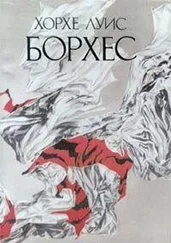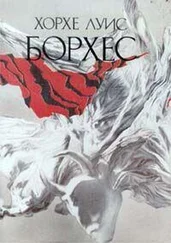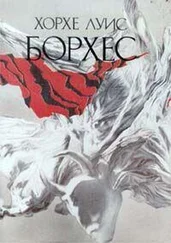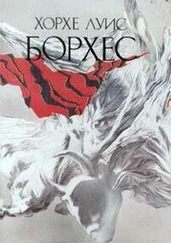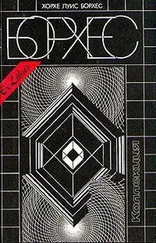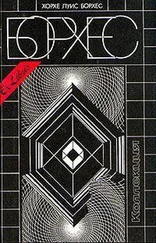Хорхе Борхес - Collected Fictions
Здесь есть возможность читать онлайн «Хорхе Борхес - Collected Fictions» весь текст электронной книги совершенно бесплатно (целиком полную версию без сокращений). В некоторых случаях можно слушать аудио, скачать через торрент в формате fb2 и присутствует краткое содержание. Год выпуска: 1999, ISBN: 1999, Издательство: Penguin (UK), Жанр: Старинная литература, на английском языке. Описание произведения, (предисловие) а так же отзывы посетителей доступны на портале библиотеки ЛибКат.
- Название:Collected Fictions
- Автор:
- Издательство:Penguin (UK)
- Жанр:
- Год:1999
- ISBN:9780140286809
- Рейтинг книги:5 / 5. Голосов: 1
-
Избранное:Добавить в избранное
- Отзывы:
-
Ваша оценка:
- 100
- 1
- 2
- 3
- 4
- 5
Collected Fictions: краткое содержание, описание и аннотация
Предлагаем к чтению аннотацию, описание, краткое содержание или предисловие (зависит от того, что написал сам автор книги «Collected Fictions»). Если вы не нашли необходимую информацию о книге — напишите в комментариях, мы постараемся отыскать её.
Collected Fictions — читать онлайн бесплатно полную книгу (весь текст) целиком
Ниже представлен текст книги, разбитый по страницам. Система сохранения места последней прочитанной страницы, позволяет с удобством читать онлайн бесплатно книгу «Collected Fictions», без необходимости каждый раз заново искать на чём Вы остановились. Поставьте закладку, и сможете в любой момент перейти на страницу, на которой закончили чтение.
Интервал:
Закладка:
* White ribbon: Because the troops were often irregulars, or recruited from the gauchos or farmhands of the Argentine, and therefore lacking standardized uniforms, the only way to tell friend from enemy was by these ribbons, white in the case of the Blancos, red in the case of the Colorados. Here the white ribbon worn by the character marks him as a follower of Saravia, the leader of the Whites. (See notes passim about the significance of these parties.) * Zumacos: The name by which regulars in the Uruguayan National Army were known.
* Artiguismo: That is, in accord with the life and views of José Gervasio Artigas (1764-1850), a Uruguayan hero who fought against both the Spaniards and the nascent Argentines to forge a separate nation out of what had just been the Banda Oriental, or east bank of the Plate. The argument was that Uruguay had its own "spirit," its own "sense of place," which the effete Argentines of Buenos Aires, who only romanticized the gaucho but had none of their own, could never truly understand or live.
* Red infantry: The Reds, or Colorados, were the forces of the official national government of Uruguay, in contradistinction to the Blancos, or Whites, of Saravia's forces; the Reds therefore had generally better weapons and equipment, and better-trained military officers on the whole, than the irregular and largely gaucho Whites.
* ¡Viva Urquiza!: Justo José Urquiza (1801-1870) was president of the Argentinian Confederation between 1854 and 1860. Prior to that, he had fought with the Federalists under Rosas (the provincial forces) against the Unitarians (the Buenos Aires-based centralizing forces), but in 1845 he broke with Rosas (whom JLB always excoriates as a vicious dictator) and eventually saw Buenos Aires province and the other provinces of the Argentinian Confederation brought together into the modern nation of Argentina, though under the presidency of Bartolomé Mitre.
* Cagancha or India Muerta: The perplexity here derives from the fact that while the battle at Masoller, in which Damián took part, occurred in 1904, the cry ¡Viva Urquiza! would have been heard at the Battle of Cagancha (1839) or India Muerta (1845), where Urquiza's rebel Federalist forces fought the Unitarians. At Cagancha, Urquiza was defeated by the Unitarians; at India Muertahe defeated them. This story may also, thus, have certain subterranean connections with "The Theologians," in its examination of the possibilities of repeating or circular, or at least nondiscrete, time.
* He "marked" no one: He left his mark on no man in a knife fight; in a fight, when the slight might, even by the standards of the day, be deemed too inconsequential to kill a man for, or if the other man refused to fight, the winner would leave his mark, a scar, that would settle the score.
Averroës' Search
* "The seven sleepers of Ephesus": This is a very peculiar story to put in the minds of these Islamic luminaries, for the story of the seven sleepers of Ephesus is a Christian story, told by Gregory of Tours. Clearly the breadth of culture of these gentlemen is great, but it is difficult (at least for this translator) to see the relationship of this particular tale (unlike the other "stories," such as the children playing or "representing" life and the "if it had been a snake it would have bitten him" story told by abu-al-Hasan) to Averroës' quest.
The Zahir
* Calk Aráoz: Fishburn and Hughes tell us that in the 19305, Calle Aráoz was "a street of small houses inhabited by the impoverished middle class"; it is near the penitentiary Las Heras.
* On the corner of Chile and Tacuari: A corner in the Barrio Sur, or southern part of Buenos Aires, as the story says; it is some ten blocks from the Plaza Constitución and its great station.
* Truco: A card game indigenous, apparently, to Argentina and played very often in these establishments. Borges was fascinated by this game and devoted an essay and two or three poems to it, along with references, such as this one, scattered through-out hisœuvre. The phrase "to my misfortune" indicates the inexorability of the attraction that the game held for him; the narrator could apparently simply not avoid going to the bar. Truco's nature, for JLB, is that combination of fate and chance that seems to rule over human life as well as over games: an infinitude of possibilities within a limited number of cards, the limitations of the rules. See "Truco" in Borges: A Reader.
* La Concepción:A large church in the Barrio Sur, near the Plaza Constitución.
* The chamfered curb in darkness: Here JLB's reference is to an ochava —that is, a "corner with the corner cut off" to form a three-sided, almost round curb, and a somewhat wider eight-sided rather than four-sided intersection, as the four corners of the intersection would all be chamfered in that way. This reference adds to the "old-fashioned" atmosphere of the story, because chamfered corners were common on streets traveled by large horse-drawn wagons, which would need extra space to turn the corners so that their wheels would not ride up onto the sidewalks.
* I went neither to the Basilica del Pilar that morning nor to the cemetery: That is, the narrator did not go to Teodelina's funeral. The Basilica del Pilar is one of the most impressive churches in central Buenos Aires, near the Recoleta cemetery where Teodelina Vilar would surely have been buried.
* "She's been put into Bosch": Bosch was "a well-known private clinic frequented by the porteño elite" (Fishburn and Hughes).
The Writing of the God
* / saw the origins told by the Book of the People. I saw... the dogs that tore at their faces: Here the priest is remembering the story of the creation of the world told in the Popul Vuh, the Mayan sacred text. The standard modern translation is by Dennis Tedlock: Popul Vuh: The Mayan Book of the Dawn of Life (New York: Simon & Schuster Touchstone, 1985). For this part of the genesis story, cf. pp.84-85.
The Wait
* Plaza del Once: Pronounced óhn-say, not wunce. This is actually "Plaza Once," but the homonymy of the English and Spanish words makes it advisable, the translator thinks, to modify the name slightly in order to alert the English reader to the Spanish ("eleven"), rather than the English ("onetime" or "past"), sense of the word. Plaza Once is one of Buenos Aires' oldest squares, "associated in Borges's memory with horse-drawn carts" (Fishburn and Hughes), though later simply a modern square.
The Aleph
* Quilines: A district in southern Buenos Aires; "at one time favoured for weekend villas, particularly by the British, Quilmes has since become unfashionable, a heavily industrialised area, known mainly for Quilmes Beer, the largest brewing company in the world" (Fishburn and Hughes). Thus JLB is evoking a world of privilege and luxe.
* Juan Crisóstomo Laflnur Library: This library is named after JLB's great-uncle (1797-1824), who occupied the chair of philosophy at the Colegio de la Unión del Suduntil, under attack for teaching materialism, he was forced into exile.
* "The most elevated heights of Flores": Here Daneri's absurdity reaches "new heights," for though the neighborhood of Flores had been very much in vogue among the affluent of Buenos Aires society during the nineteenth century, it was only about a hundred feet above sea level. Moreover, it had lost much of its exclusiveness, and therefore glamour, by the time of this story, since in the yellow fever epidemic of 1871 people fled "central" Buenos Aires for the "outlying" neighborhood.
Читать дальшеИнтервал:
Закладка:
Похожие книги на «Collected Fictions»
Представляем Вашему вниманию похожие книги на «Collected Fictions» списком для выбора. Мы отобрали схожую по названию и смыслу литературу в надежде предоставить читателям больше вариантов отыскать новые, интересные, ещё непрочитанные произведения.
Обсуждение, отзывы о книге «Collected Fictions» и просто собственные мнения читателей. Оставьте ваши комментарии, напишите, что Вы думаете о произведении, его смысле или главных героях. Укажите что конкретно понравилось, а что нет, и почему Вы так считаете.

